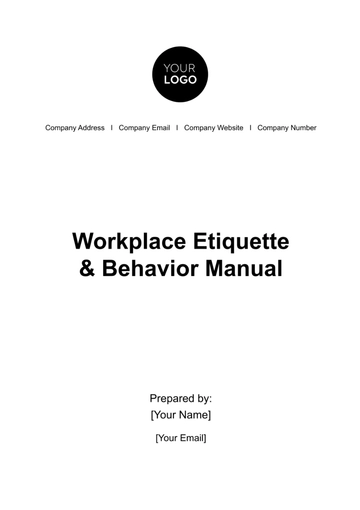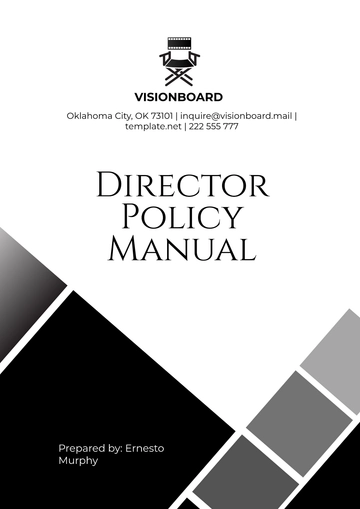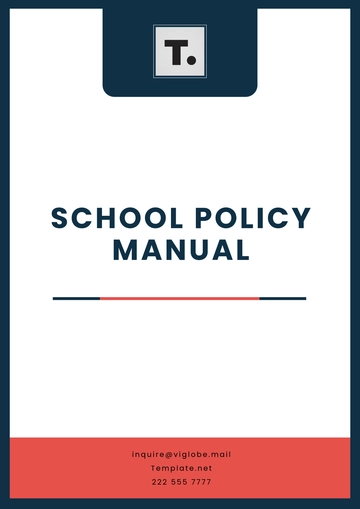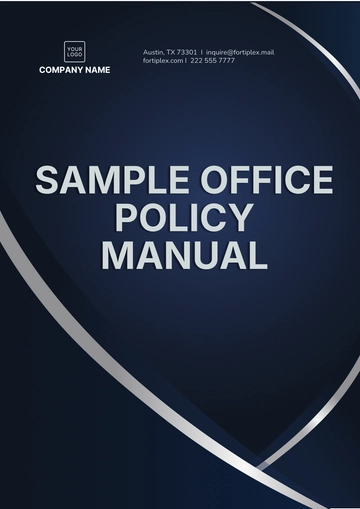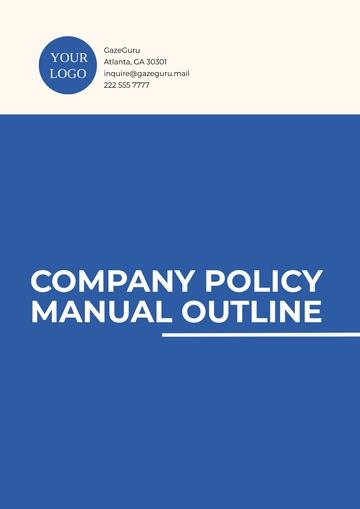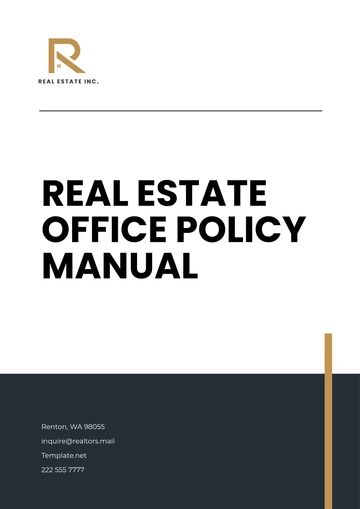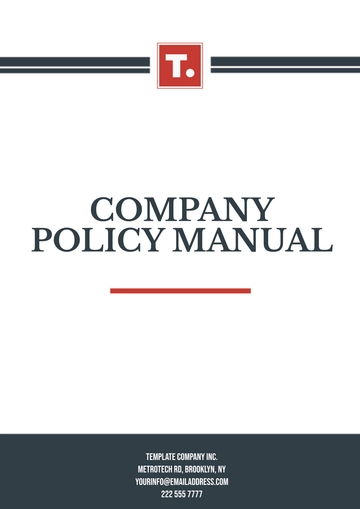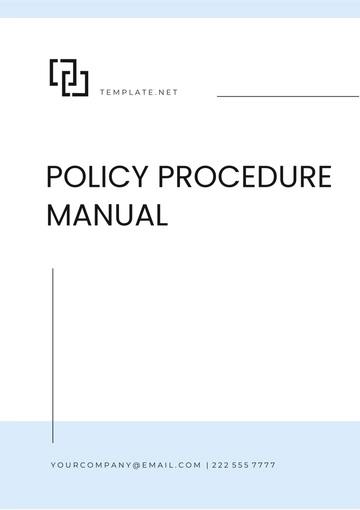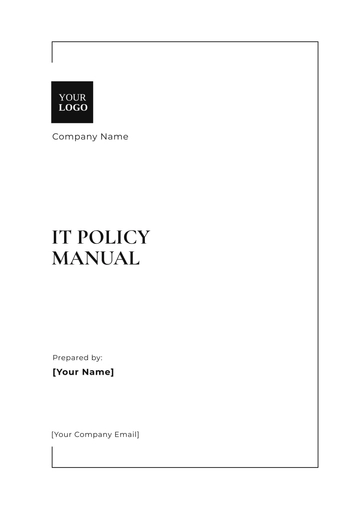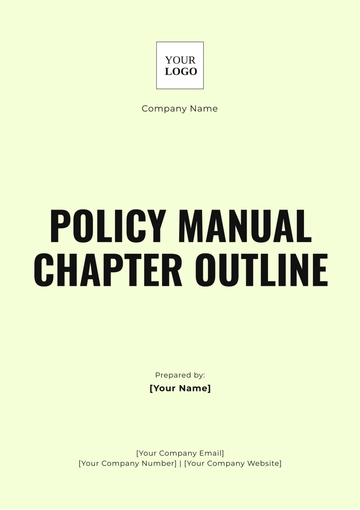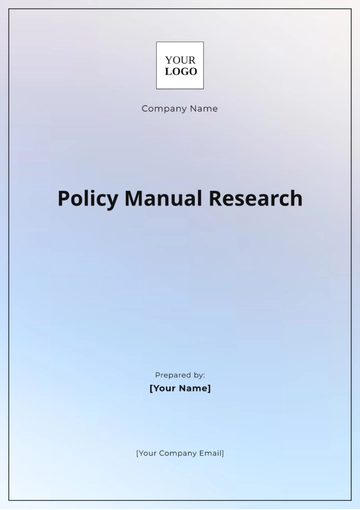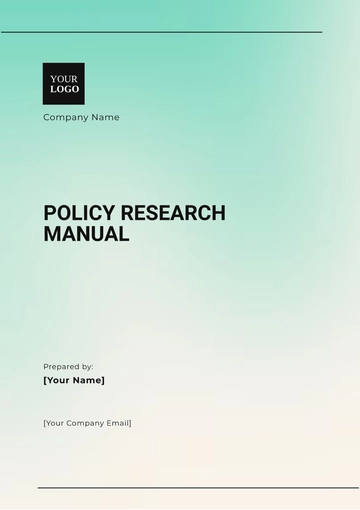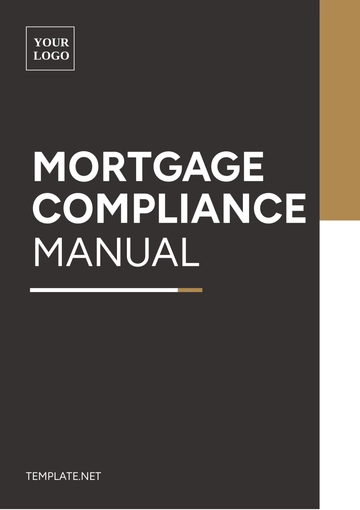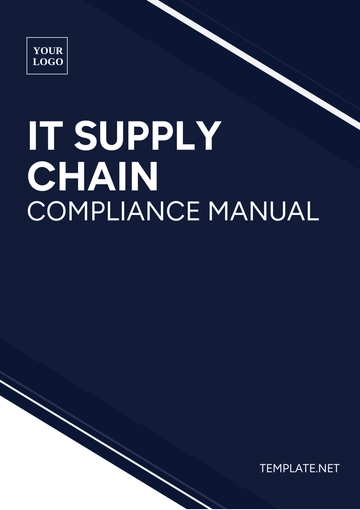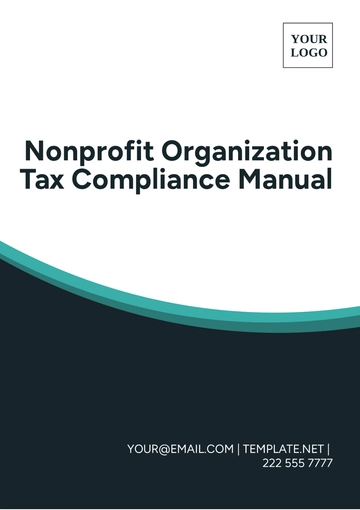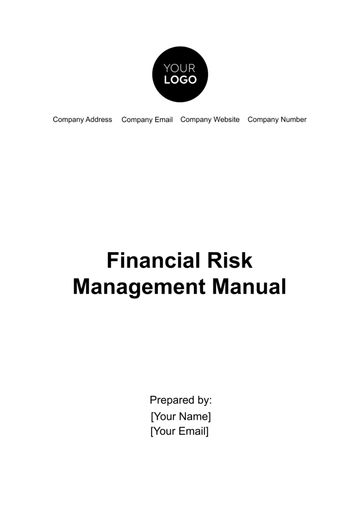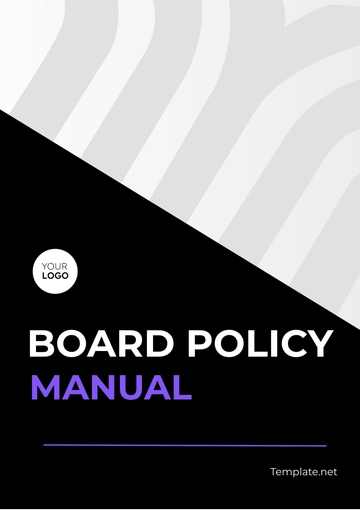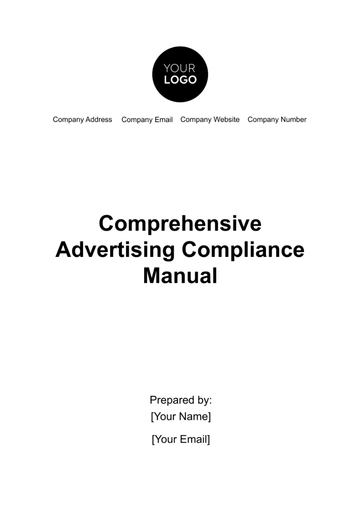Free Finance Credit Manual
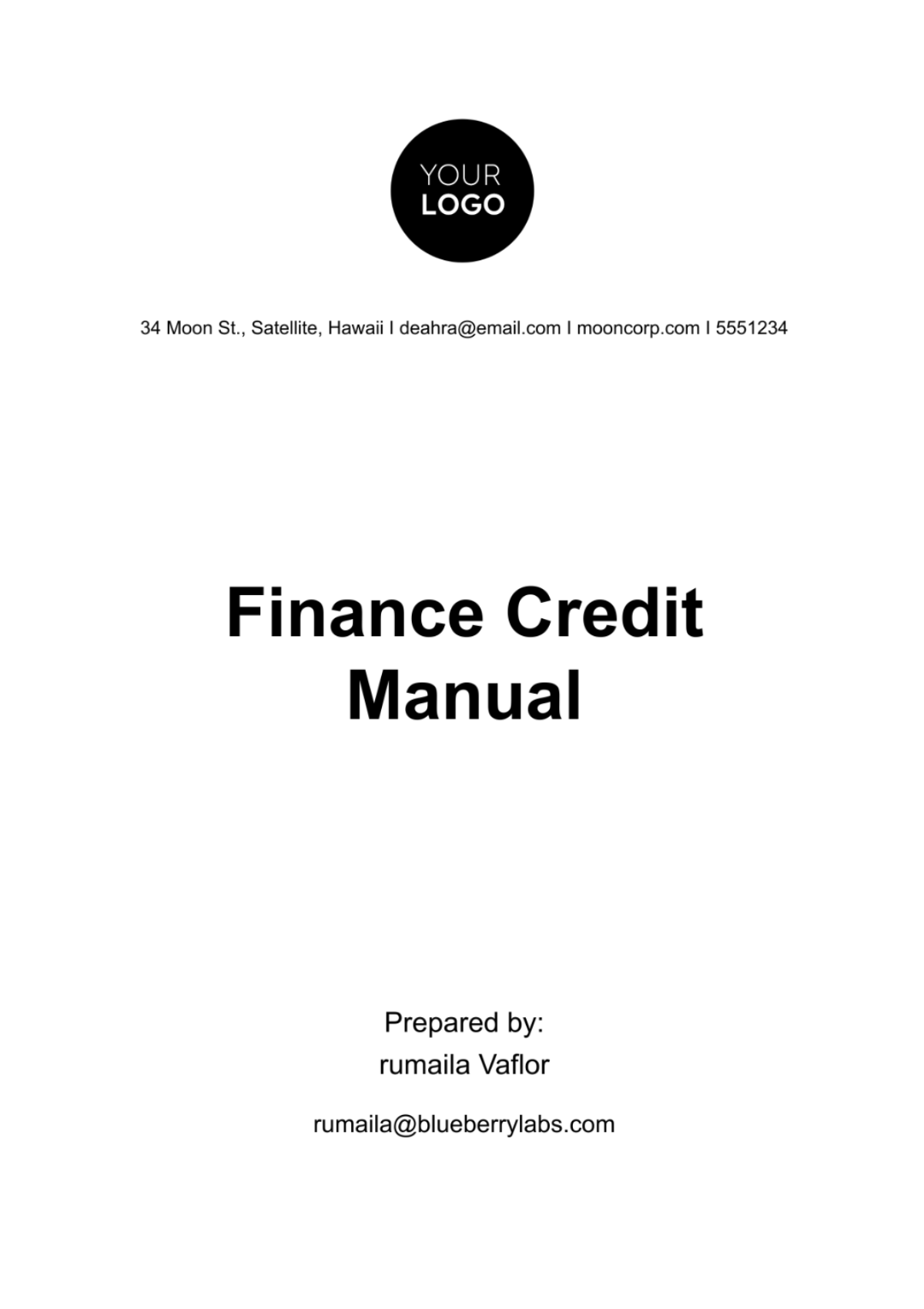
Introduction and Overview
Welcome to the [Your Company Name] Finance Credit Manual. This vital document serves as the cornerstone for our credit management strategy, offering extensive guidelines for extending credit to our valued customers. It is meticulously designed to ensure that all aspects of credit provision are executed with the utmost consistency, transparency, and legal compliance.
Our commitment at [Your Company Name] is to maintain the highest standards of ethical lending and risk management. This manual not only reflects our adherence to regulatory requirements but also our dedication to fair and responsible credit practices. By following these guidelines, we strive to foster trust and long-term relationships with our customers, ensuring our mutual growth and financial stability.
Regulatory Compliance and Legal Framework
At [Your Company Name], our commitment to regulatory compliance and adherence to the legal framework is unwavering. Our operations meticulously align with both federal and state laws governing lending practices, ensuring we conduct our business ethically and lawfully.
Federal Compliance: Our policies are rigorously designed to comply with key federal laws, including the Truth in Lending Act (TILA), which mandates full disclosure of credit terms to consumers, and the Equal Credit Opportunity Act (ECOA), which prohibits discrimination in lending.
State Regulations: We also diligently adhere to state-specific lending laws and regulations. This ensures that our practices respect the unique legal landscapes of each state we operate in.
Fair Lending Laws: Central to our operations are the Fair Lending Laws, which guide us in providing equal access to credit and making decisions based on objective criteria, thereby avoiding discriminatory practices.
Compliance Training and Audits: To maintain high compliance standards, our staff undergoes regular training. Additionally, we conduct periodic audits to ensure ongoing adherence to these laws and regulations.
Consumer Protection: We are dedicated to consumer protection, abiding by laws designed to safeguard consumer rights and provide transparency in all our credit transactions.
Credit Approval Authority and Responsibilities
In this crucial section of the Finance Credit Manual, we define the framework for credit approval authority within [Your Company Name]. This table elucidates the roles and responsibilities of designated personnel and committees, detailing their qualification criteria, operational hierarchy, and the extent of their decision-making authority. By establishing clear lines of accountability and authority, we ensure a structured and responsible approach to credit approval.
Role | Responsibilities | Qualification Parameters | Authority Level |
|---|---|---|---|
Credit Officer | Evaluate loan applications, assess creditworthiness, and make initial credit decisions | In-depth knowledge of credit analysis, risk assessment, and relevant regulations | Authority to approve or deny small to medium-sized loans within predefined limits |
Credit Committee | Review and decide on large or complex loan applications | Senior-level experience in finance, risk management, and legal compliance | Authority to approve or deny large and complex loans beyond the scope of individual officers |
Risk Management Officer | Monitor credit portfolio, identify and assess risks, propose mitigation strategies | Expertise in risk analysis, financial forecasting, and compliance | Advisory role; no direct approval authority but significant influence on credit decisions |
Compliance Officer | Ensure all credit decisions comply with internal policies and external regulations | Knowledge of federal and state lending laws, internal policy expertise | Oversight and audit role to ensure legal and policy compliance; no direct approval authority |
Credit Risk Management
At [Your Company Name], managing credit risk effectively is at the forefront of our operations. This section delves into our sophisticated risk assessment methodologies, risk rating systems, and portfolio management strategies. Our approach is designed to ensure a balanced and sustainable lending environment, safeguarding both our clients' interests and our institution's financial health.
Risk Assessment Methodologies: We employ advanced analytical techniques to evaluate borrower creditworthiness, considering factors like credit history, financial stability, and market conditions.
Risk Rating Systems: Our systematic risk rating process categorizes borrowers based on their credit risk, enabling tailored loan terms and mitigating potential defaults.
Portfolio Management Strategies: We actively monitor and adjust our credit portfolio to maintain a healthy balance between risk and return, ensuring long-term sustainability.
Stress Testing and Scenario Analysis: Regular stress testing and scenario analysis help us anticipate and prepare for potential market shifts, protecting our portfolio against unforeseen economic changes.
Compliance and Reporting: Rigorous compliance with regulatory standards is integral to our risk management. Regular reporting ensures transparency and ongoing evaluation of our risk management strategies.
Underwriting Standards and Procedures
In this section of the Finance Credit Manual, we detail the underwriting standards and procedures of [Your Company Name]. Our approach to assessing client creditworthiness is comprehensive and meticulous, encompassing income verification, credit history assessment, collateral evaluation, and debt-to-income ratio calculation. These rigorously applied standards are crucial for extending credit responsibly and ethically.
Application Review
Income Verification
Credit History Assessment
Collateral Evaluation
Debt-to-Income Ratio Calculation
Underwriting Decision
Loan Products and Programs
At [Your Company Name], we offer a diverse range of loan products, each tailored to meet the unique financial needs of our customers. This table provides an overview of the key aspects of our primary loan offerings, including their eligibility criteria, terms, and special features.
Loan Product | Eligibility Criteria | Terms (e.g., Interest Rates, Duration) | Special Features |
|---|---|---|---|
Personal Loans | Verifiable income, credit score requirements | Competitive rates, flexible repayment terms | Suitable for a variety of personal needs, quick processing |
Mortgages | Credit score, employment history, down payment | Varying terms based on type (Fixed, ARM, etc.), competitive rates | Tailored solutions for homebuyers, refinancing options |
Business Lines of Credit | Business financial statements, credit history | Varied interest rates, typically revolving credit lines | Flexible access to funds for business needs, potential tax benefits |
Pricing, Fees, and Charges
At [Your Company Name], transparency in loan pricing is a cornerstone of our service. This section provides a clear and detailed outline of the pricing structures for our various credit products. The table below lists the interest rates, fees, penalties, and any other charges associated with each type of loan, ensuring our customers have all the necessary information upfront.
Loan Product | Loan Product | Fees and Penalties |
|---|---|---|
Personal Loans | Competitive fixed or variable rates based on creditworthiness | Origination fees, late payment penalties, no prepayment penalties |
Mortgages | Varies (Fixed, Adjustable); based on market rates and borrower profile | Closing costs, late fees, possible early repayment fees |
Business Lines of Credit | Variable rates tied to market indices | Origination fees, annual maintenance fees, penalties for late payments or overdrafts |
Documentation and Loan Closing
The Documentation and Loan Closing section of the Finance Credit Manual is crucial for ensuring a secure and compliant loan process at [Your Company Name]. This section meticulously outlines the specific documents required for various loan types, and details the step-by-step procedures to be followed for the official closing and disbursement of loans.
Collection of Required Documents: Gather all necessary documents, including loan agreements, income proof, and collateral papers, specific to the loan type.
Verification and Approval: Conduct thorough verification of all submitted documents and obtain final loan approval from the designated authority.
Loan Agreement Signing: Facilitate the signing of the loan agreement by all parties, ensuring understanding and agreement of the terms.
Final Loan Review: Perform a final review of the loan package to ensure completeness and compliance with internal policies and regulations.
Disbursement of Funds: Officially disburse the loan amount to the borrower following all regulatory guidelines and internal procedures.
Loan Monitoring and Servicing
In this critical section of the Finance Credit Manual, [Your Company Name] outlines the detailed documentation required for various types of loans. This includes agreements, financial statements, proof of income, collateral documentation, and other necessary legal papers. Ensuring that all requisite documentation is accurately completed and collected is fundamental for a legally compliant and secure loan process.
The loan closing and disbursement procedures at [Your Company Name] are methodically structured to facilitate a smooth and clear process. From the final review of documents to the official signing and the eventual disbursement of funds, each step is meticulously executed. This approach not only ensures compliance with legal standards but also provides our clients with a transparent and reliable closing experience, reflecting our commitment to excellence in customer service and operational integrity.
Audit and Review Procedures
The Audit and Review Procedures section of the Finance Credit Manual is integral to maintaining the highest standards of compliance and operational excellence at [Your Company Name]. This section details our robust internal and external audit processes, designed to rigorously evaluate and enhance our credit operations. These procedures are crucial for ensuring adherence to regulations and for continually improving our credit practices.
Annual Internal Audits: Conduct comprehensive audits annually to assess the effectiveness of credit policies and procedures.
Regular Compliance Checks: Implement frequent compliance checks to ensure ongoing adherence to federal and state lending laws.
External Auditing: Engage independent external auditors periodically to provide an unbiased review of our credit operations.
Risk Assessment Updates: Continuously update our risk assessment methodologies based on audit findings to better manage credit risk.
Continuous Improvement Plan: Develop and implement a continuous improvement plan based on audit insights, aiming to enhance credit operations and customer service.
For any inquiries related to this manual, please reach out to us at [Your Company Email] or call us at [Your Company Number].
- 100% Customizable, free editor
- Access 1 Million+ Templates, photo’s & graphics
- Download or share as a template
- Click and replace photos, graphics, text, backgrounds
- Resize, crop, AI write & more
- Access advanced editor
Discover the ultimate Finance Credit Manual Template at Template.net! Fully editable and customizable, this template is designed to streamline your financial documentation process. Tailored for ease and efficiency, it's readily editable in our Ai Editor Tool, making it a perfect fit for crafting detailed, compliant finance credit manuals.


